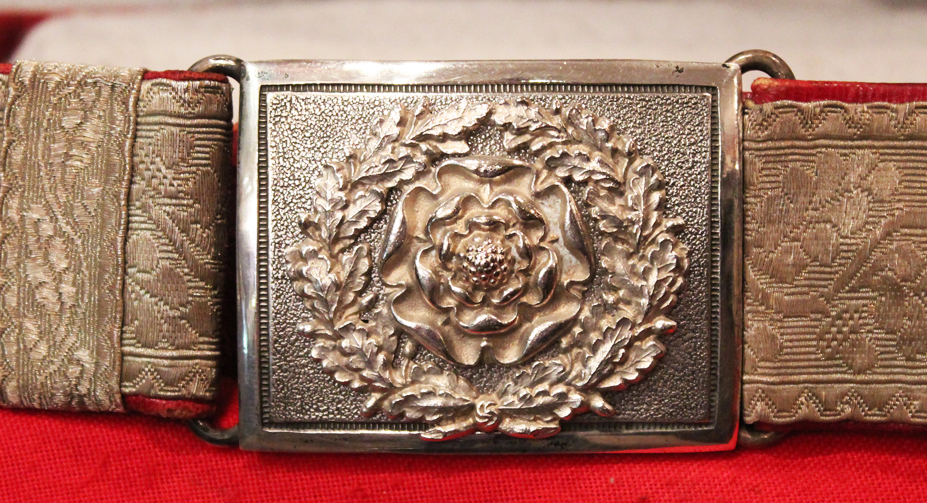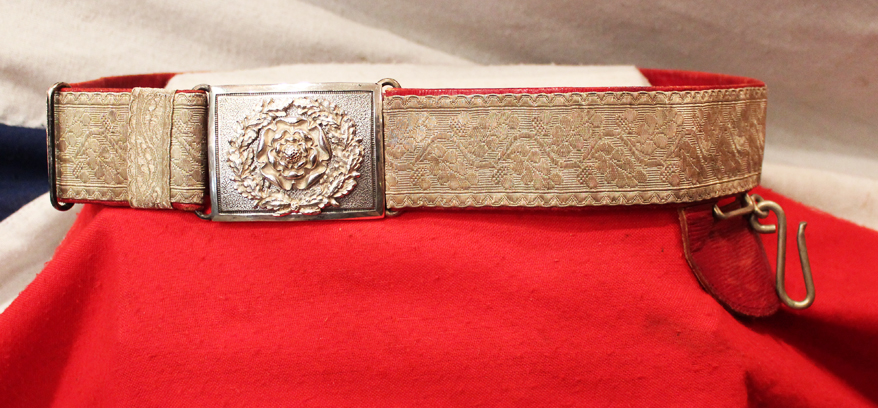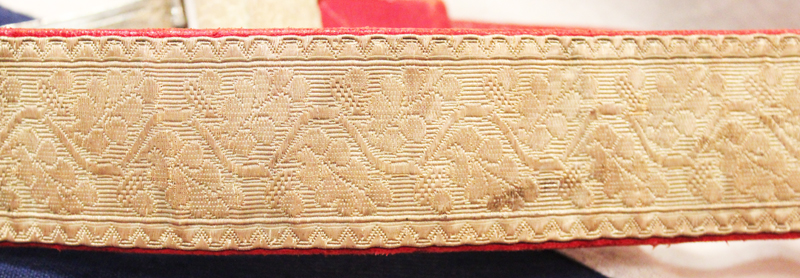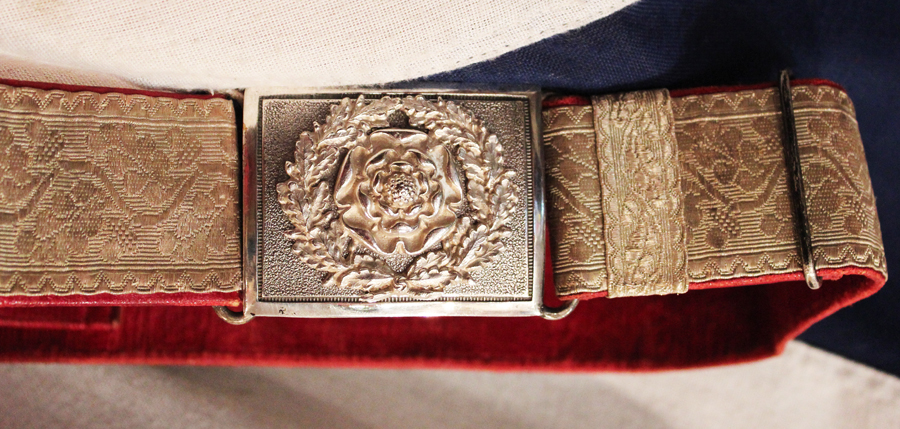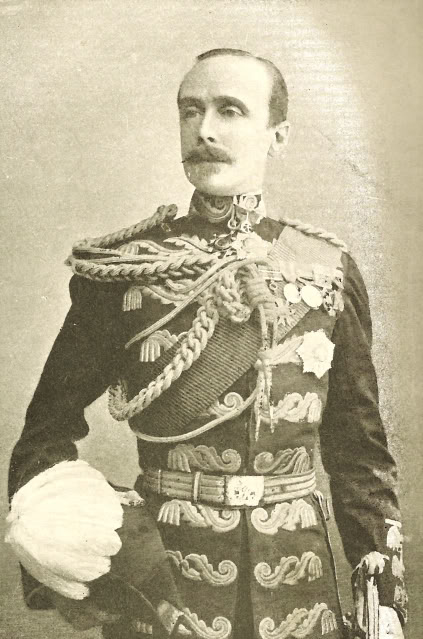A Superb English Lord-Lieutenant's Silver Belt and Silver Lace Bullion Belt
Victorian. The silver buckle bears a centrally mounted English rose motif with an oakleaf and acorn wreath surrounding. A red Morocco leather lined belt which is covered in pure silver silver lace brocade bullion, in the continued design of the highest rank oak leaf and acorn scrolling vine, representing the monarch's personal representative, the Lord Lieutenant.
The Lord-Lieutenant is the British monarch's personal representative in each county of the United Kingdom. Historically, the Lord-Lieutenant was responsible for organising the county's militia. Lieutenants were first appointed to a number of English counties by King Henry VIII in the 1540s, when the military functions of the sheriff were handed over to him. He raised and was responsible for the efficiency of the local militia units of the county, and afterwards of the yeomanry, and volunteers. He was commander of these forces, whose officers he appointed. These commissions were originally of temporary duration, and only when the situation required the local militia to be specially supervised and well prepared; often where invasion by Scotland or France might be expected.
Lieutenancies soon became more organised, probably in the reign of his successor King Edward VI, their establishment being approved by the English parliament in 1550. However, it was not until the threat of invasion by the forces of Spain in 1585 that lieutenants were appointed to all counties and counties corporate and became in effect permanent. Although some counties were left without lieutenants during the 1590s, following the defeat of the Spanish Armada, the office continued to exist, and was retained by King James I even after the end of the Anglo-Spanish War.
The office was abolished under the Commonwealth, but was re-established following the Restoration under the City of London Militia Act 1662, which declared that:
The King's most Excellent Majesty, his Heirs and Successors, shall and may from Time to Time, as Occasion shall require, issue forth several Commissions of Lieutenancy to such Persons as his Majesty, his Heirs and Successors, shall think fit to be his Majesty's Lieutenants for the several and respective Counties, Cities and Places of England and Dominion of Wales, and Town of Berwick upon Tweed.
Although not explicitly stated, from that date lieutenants were appointed to "counties at large", with their jurisdiction including the counties corporate within the parent county. For example, lieutenants of Devon in the seventeenth and eighteenth centuries appointed deputy lieutenants to the City of Exeter, and were sometimes described as the "Lieutenant of Devon and Exeter" The origin of this anomaly may have lain in the former palatine status of Pembrokeshire.
The City of London was uniquely given a commission of lieutenancy, and was exempt from the authority of the lieutenant of Middlesex. The Constable of the Tower of London and the Warden of the Cinque Ports were ex-officio lieutenants for the Tower Hamlets and Cinque Ports respectively, which were treated as counties in legislation regarding lieutenancy and militia affairs.
The official title of the office at this time was His or Her Majesty's "Lieutenant for the county of ..", but as almost all office-holders were Peers of the realm, they were referred to as "Lord-Lieutenant".
Code: 20522
385.00 GBP

